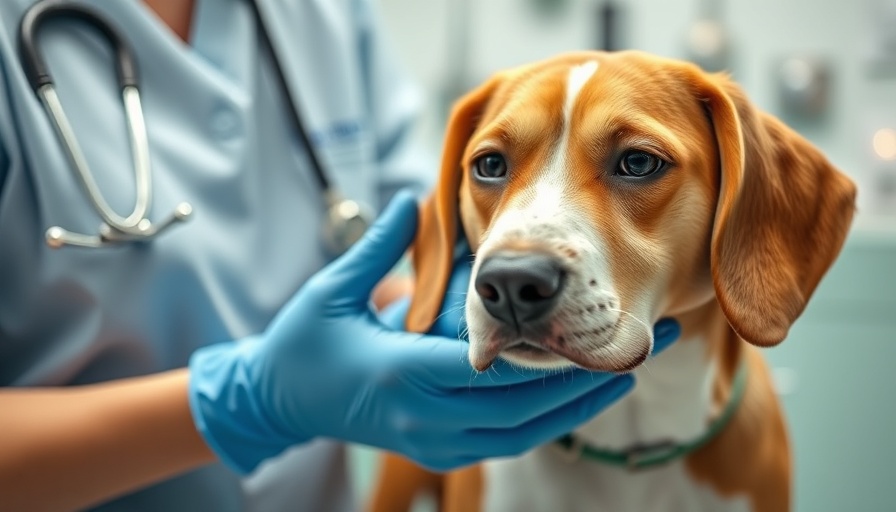
Understanding Dog Bleeding: A Dog Owner's Guide
When your dog starts bleeding, whether it's from a small cut or a more serious injury, it's crucial to stay calm and take the right steps. Like any concerned pet owner, you might feel panic rising as you see your furry friend in distress. The good news? Depending on the severity of the bleeding, there are actions you can take at home to manage the situation appropriately.
Identifying an Emergency Situation
First and foremost, it’s essential to differentiate between minor and severe injuries. You may find yourself asking, "My dog is bleeding—is it an emergency?" Here are key signs to look for:
- Excessive blood loss, which may indicate a severed artery.
- Bleeding that persists beyond ten minutes.
- A large or deep wound, especially those resulting from trauma, like a car accident.
- Signs of lethargy or weakness in your dog.
If you notice any of these alarming signs, it's vital to seek veterinary care immediately. A quick call to your vet can reassure you through assessing your dog's condition.
Home Remedies to Manage Minor Bleeding
For minor injuries, the right home remedies can prevent the bleeding from worsening. Here are some methods that are handy to have in your first aid toolkit:
Use Gravity to Your Advantage
If the bleeding occurs on your dog’s leg or paw, positioning the injured area above the heart can significantly slow the bleeding. An elevated limb allows gravity to assist in controlling blood flow.
Styptic Powder: A Must-Have for Pet Owners
This handy powder, commonly known by the brand name Kwik Stop, is invaluable for stopping bleeding from nail trims or minor scrapes. Simply apply some powder to the affected area and apply firm pressure; it usually works swiftly to halt the bleeding.
Silver Nitrate Sticks for Cauterization
For small cuts or bleeding nails, silver nitrate sticks can serve as a more powerful option. These sticks use chemical cauterization to seal the wound. Simply apply the tip lightly onto the bleeding tissue. Note, however, that while effective, they can sting and might temporarily stain your skin brown.
Prepare Your Dog First Aid Kit
In light of these tips, preparing a dog first aid kit is a prudent move for any pet owner. Include items such as:
- Styptic powder
- Silver nitrate sticks
- Gauze and bandages
- Antiseptic wipes
- Emergency contact information for your veterinarian
Having these tools readily available could help you respond quickly, reducing anxiety for both you and your dog during a stressful situation.
Emotional Support: The Importance of Calmness
During an emergency, it’s easy to succumb to panic. However, your dog can sense your emotions. By maintaining a calm demeanor, you not only help yourself think clearly but also reassure your furry friend that they are safe. Speak soothingly and handle them gently as you apply home remedies or prepare for a vet visit.
What’s Next? Follow-Up Care
After managing any injury, always follow up with your veterinarian. Even if you think the incident is minor, your vet can guide you on any care your dog needs moving forward. Communication with your veterinarian will ensure the best outcomes for your dog's health.
Staying informed about dog first aid is a powerful way to protect our beloved companions. Caring for a pet involves knowing how to act in emergencies, and your proactive steps make all the difference between a small scare and a serious health issue. Whenever in doubt, leaning on your veterinarian's knowledge is always a wise choice.
 Add Row
Add Row  Add
Add 


Write A Comment